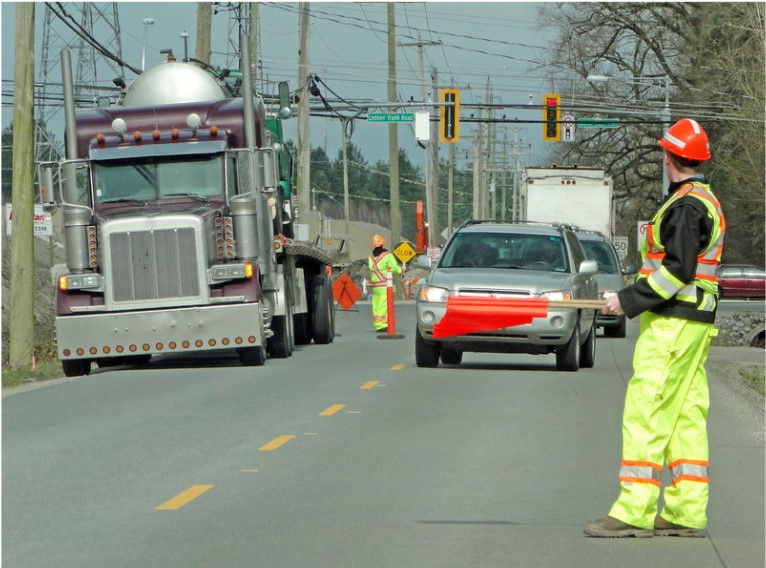The Vital Role of Work Zone Flagging Control
- Elie Nassif
- Jul 5, 2023
- 2 min read
Work zone traffic flagging safety is of utmost importance in the construction industry. It plays a critical role in safeguarding workers and motorists alike, ensuring smooth traffic flow, and preventing accidents. In this blog post, we will explore why work zone traffic flagging safety is indispensable and the key practices that help maintain a secure work environment.
Importance of Work Zone Traffic Flagging Safety
Work zones present unique challenges due to the proximity of heavy machinery, construction materials, and workers, all amidst an active traffic environment. Without proper management and control, these areas can become hazardous, leading to accidents and injuries. This is where work zone traffic flagging safety comes into play.
Firstly, flaggers serve as the eyes and ears of the work zone, alerting workers to potential dangers and managing traffic flow. They provide crucial communication between drivers, workers, and equipment operators, ensuring that everyone remains informed and safe.
Secondly, flaggers help maintain a steady traffic flow by strategically controlling the movement of vehicles. They direct traffic, enforce speed limits, and implement lane closures, detours, or temporary traffic patterns. By doing so, they minimize congestion, reduce the risk of collisions, and maintain order within the work zone.

Key Practices for Work Zone Traffic Flagging Safety
To ensure work zone traffic flagging safety, several key practices must be followed:
1. Training and Certification: Flaggers must undergo proper training and obtain certification to understand the techniques, protocols, and safety standards associated with their role. They should be equipped with knowledge of traffic control devices, signaling techniques, and emergency procedures.
2. High-Visibility Apparel and Equipment: Flaggers must wear high-visibility clothing and use appropriate safety equipment, such as reflective vests, hard hats, and gloves. These ensure that they are easily visible to motorists, even in low light conditions.
3. Clear Communication: Effective communication is crucial in work zones. Flaggers should use standardized hand signals and proper flagging procedures to clearly convey instructions to drivers, workers, and equipment operators. This helps avoid confusion and minimize the risk of accidents.
4. Alertness and Focus: Flaggers must remain alert and focused at all times. They should avoid distractions like personal devices or engaging in unrelated conversations. Maintaining a vigilant presence enables them to identify potential hazards quickly and respond accordingly.
Conclusion
In conclusion, work zone traffic flagging safety plays a pivotal role in maintaining a secure work environment in construction. By ensuring proper training, utilizing high-visibility gear, practicing clear communication, and staying alert, flaggers contribute significantly to preventing accidents and protecting the well-being of both workers and motorists.























Comments